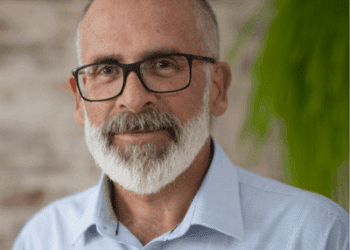Before I was a financial adviser, I used to think about what it must be like to be one. Being an accountant at the time, I guessed the business model in financial advice was similar to what I was already doing. Charge a fee and rather than focus on the past, focus on the future.
I was wrong.
When I did the big move, it was into a large SMSF firm. I spent my days using the SIS legislation to get the best monetary outcome for my clients. And at this stage I thought ‘yeah, this is very similar to tax accounting’. The firm didn’t believe in ‘commissions’, and on my end it seemed the client’s ‘fee for service’ was a fair exchange for the work provided.
But this was before I understood the financial advice business model.
These days — I understand the financial advice business model.
While the outfit I worked for didn’t take commissions, they filled the clients’ SMSFs with in-house product. Why take a measly 40 basis points and get called ‘conflicted’ when you can win awards for ‘independence’ and earn one hundred!
I transitioned to another independent financial advice practice and spent a solitary, month questioning what I had gotten myself into. The plug and play advice was: i) take out an 80 per cent loan against the family home, ii) leverage the money up, iii) invest in managed funds. Commissions on mortgage, gearing, and investments. Due to the obvious ‘Storm’ brewing on the horizon, I was out of there quick smart.
Slowly coming to the realisation that ‘independent’ was code for ‘the freedom to use any product I want (that pays me the most)’, I then decided to work for a large product provider. To be fair, we were taught about the value of ‘advice’ there more than anywhere else. But they could afford to have morals. Their product was in 90 per cent of Australian households.
But this article isn’t about independence v aligned or commissions v non commissions. Those arguments have been put forward ad infinitum. This article is about how the financial advice industry’s business model of providing financial product is over.
Consumer trends are changing, and the democratisation of technology means new players are entering the market, allowing consumers to demand what financial products look like, rather than the other way around. Think about small business loans. Many people would like access, but it’s not something the traditional players are willing to offer. However peer-to-peer lending can facilitate the growth of a small business, but how many advisers do you know that assist in P2P lending?
When I owned a financial advice practice, I built a service around cash flow management. While the technology is slowly coming out to help enable this to function – most of the work is still manual. How is it possible that in 2017, cash flow management is still manual? How is it possible, with the value of big data, that no big product provider has figured out a way to monetise cash flow? This type of product would be snapped up by the market immediately!
Because traditional product providers haven’t moved quick enough, it’s financial advisers who are going to suffer. And the longer advisers are handcuffed to dealing only in traditional products, the worse it will be. Disruption waits for no one. While dealer groups argue over APLs and what new standard text needs to be included in SoAs moving forward, agile fintech companies like Acorns swoop in and pick up 200,000 clients in 12 months.
And that’s just the beginning.
At the moment, I see taxi drivers on the news who are furious because disruption took away their business model. Do I care that Cabcharge is losing business? No. But I feel for the individuals who were too slow to move. I’ve been using Uber for four years now. It offers a more comprehensive solution at a cheaper price point. I’m honestly surprised it took this long for reality to set in.
And I’m watching the same thing play out in a field close to my heart.
See, the problem isn’t robo advice. Robo advice is simply automated asset allocation. Silicon Valley got a little ahead of themselves there, even Betterment are now hiring advisers. But what’s coming are more comprehensive solutions at a cheaper price point. Can’t afford a house but want to purchase property? No worries, buy a portion of a house with an app.
Can an adviser do that? If you think ‘yeah, just buy this property managed fund’ you’ve missed the point. People don’t want ‘Corporation ABC, product XYZ’. They want to connect with the investment. There is no pride, no ownership behind walls of incorporation. That’s why property has always been close to investors’ hearts. Now technology is giving people a chance to do that easier, quicker, and cheaper than ever.
Legislation is about to change to allow retail investors access to Angel investing via what they call crowdfunding. If a consumer has the chance to invest in ‘Corporation ABC, product XYZ’, or ‘Tim and Bobby created SunPower to solve global warming and have grown revenue 30 per cent month-on-month’ – which do you think is going to get the investor’s attention and money?
We all know advisers play in a handcuffed world, but there has never really been another alternative for the client. But there is one coming. As far as I see it, there is a fork in the road not too far away with two offers. On one side will be the adviser with their formal statement of advice, full of standard text offering traditional products. The other will be a folder on a mobile phone called ‘finance apps’.
Advisers will never lose the battle of advice, no app can replicate the value of good advice (at least yet), but unless advisers can extend past the limitations of what products they can use moving forward, the share of wallet will drop. And I don’t see the big incumbent players moving into progressive products anytime soon. I just hope advisers remain relevant until it happens.
Clayton Daniel is the author of Fund Your Ideal Lifestyle and a former financial adviser




If advisers place there value in product slection of any kind (traditional loan or P2P), you’re in for a world of hurt
Some good points in here Clayton. Would love to hear more about P2P next time we meet. Particularly around average loan amounts and loan rates?
P2P lending is not new. The most common form is parents becoming the bank for part of their children’s property loans. Yes their are risks involved but these risks are significantly lower than investing in or lending to a start up such as Tim and Bobby. Diversification remains the cornerstone of risk management and good advice. It might sound passé but it is essential. Chasing sexy business ventures is thwart with risk that will potentially bring the client down and the advice practise with it.
Why is uber cheaper ? Because (until a recent court judgement ) they did not charge GST on fairs ( while taxi drivers did ) on the basis that they weren’t a taxi service ? Also drivers insurance is invalidated by co sharing. When will this be addressed ? Also studies show the typical uber driver is part time and uses the income to supplement other income or to fill a short term cash shortfall ( ie it is not a viable long term fulltime solution ). On top of all that uber loses billions each year but no one seems to understand that. Why do they do it ? To destroy the cab driver industry so they can take over their market share and monopolise the sector (eventually with driverless cars and higher prices eg our banking sector ). Robo Advice is attempting a similar strategy. Where is the consumer protection ? Politicians and legislators need to wake up.
Great article Clayton. Big instos with the money to do cool things, but they don’t give themselves the flexibility. I see that AMP has now incorporated its acquisition of Money Brilliant into its member portal, so that all AMP customers have access to cash flow reporting. Maybe that will prove to be a link between advisers and clients’ cash flow needs.